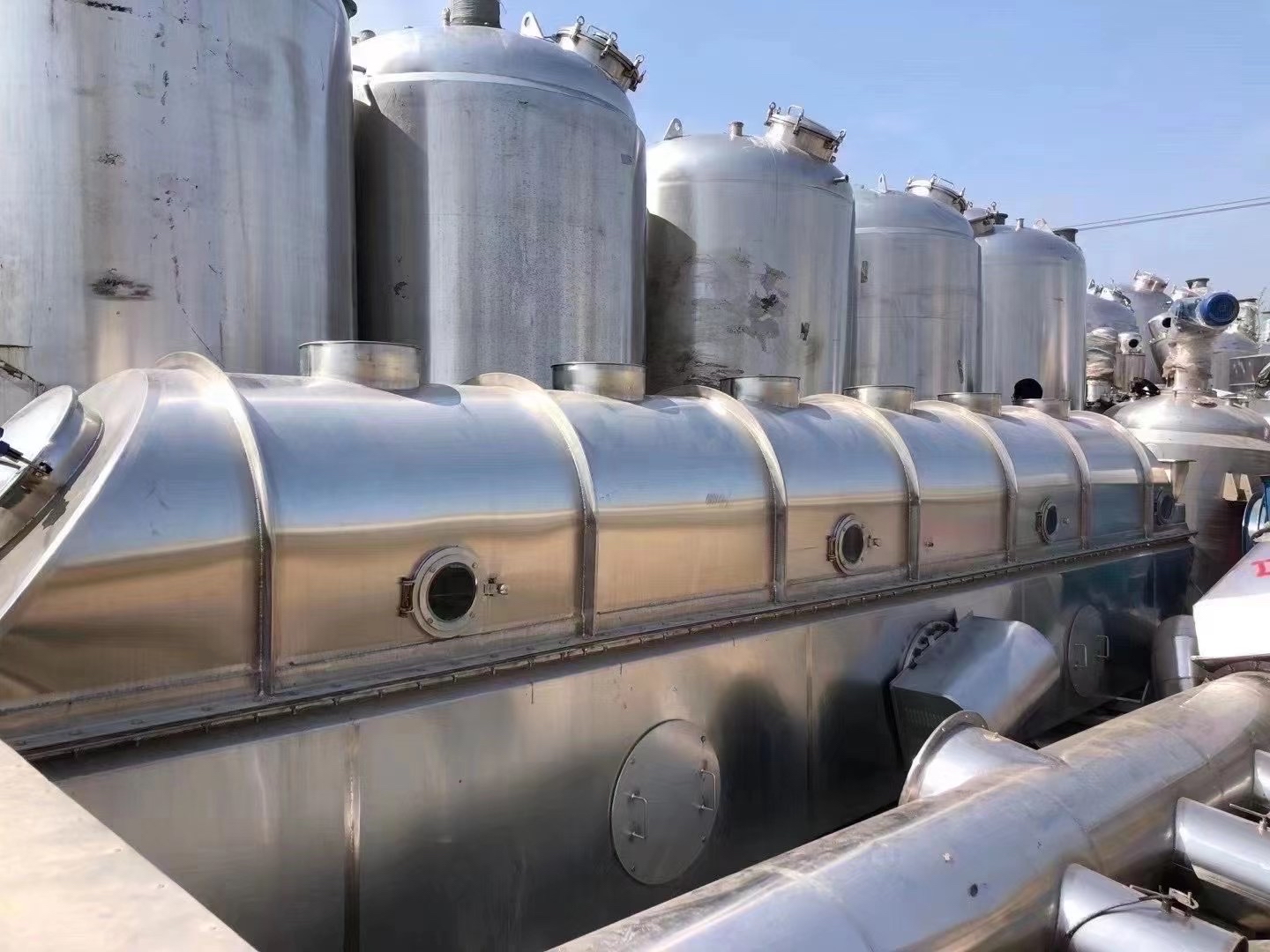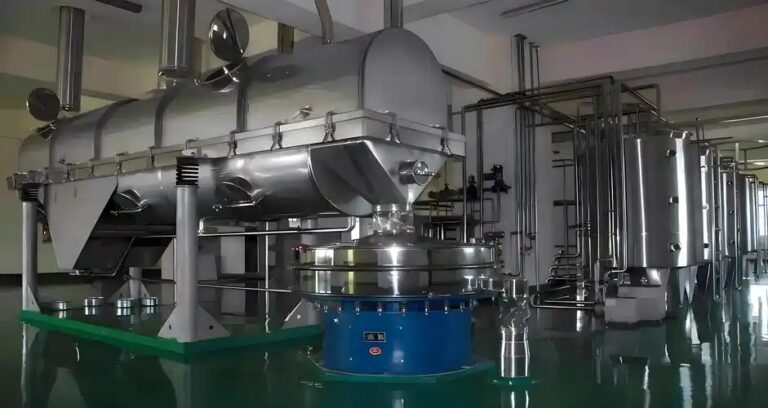O que é granulação de cama fluida e como funciona

Fluid bed granulation stands out as the most popular wet granulation method in pharmaceutical manufacturing. This process transforms fine powders into free-flowing granules by suspending them in heated air, spraying a binder solution, and then drying the formed granules. Manufacturers prefer fluid bed granulation because it increases material density, improves flowability, and creates uniform, compressible granules. The method also reduces dust and enhances cohesion, which leads to better tablets and capsules.
Main purposes include:
Improved powder flow and compressibility
Enhanced uniformity and tablet quality
Efficient mixing, granulation, and drying in one step
Takeaways -chave
Fluid bed granulation turns fine powders into uniform granules by lifting them with hot air and spraying a binder, improving flow and tablet quality.
The process combines mixing, pulverização, granule formation, and drying in one machine, saving time and reducing dust.
Operators control airflow, temperatura, and binder spray to create strong, even granules and avoid problems like clumps or uneven drying.
Fluid bed granulation produces better quality granules than other methods, with precise control over size and moisture.
This method suits many industries, incluindo produtos farmacêuticos, comida, produtos químicos, e minerais, offering efficient and cleaner production.
Fluid Bed Granulation Basics
What Is Fluid Bed Granulation
Fluid bed granulation is a process that changes fine powders into larger, more manageable granules. This method uses a stream of heated air to lift and mix the powder particles inside a special chamber. As the particles move, a binder solution sprays onto them from above. The binder acts like glue, helping the small particles stick together. The heated air dries the mixture at the same time, so the granules form quickly and evenly. Many industries, especially pharmaceuticals, use this process to make powders easier to handle and press into tablets.
Key Principles
The main principle behind fluid bed granulation involves fluidizing the powder. High-velocity air flows from the bottom of the chamber, causing the powder to behave like a fluid. This movement keeps the particles separate and allows the binder to coat them evenly. The process uses a top spray nozzle to distribute the binder solution. As the binder hits the moving particles, it causes them to stick together and form granules. The hot air dries the granules almost instantly, which means the process combines mixing, granulation, and drying in one step.
Fluid bed granulation stands out from other granulation methods. Unlike high shear granulation, which uses mechanical mixing tools to combine powders and binders, fluid bed granulation relies on air movement and spray technology. This difference means that fluid bed granulation can create uniform granules and dry them in the same machine. The process also helps sort particles by size and uses filters to trap very fine dust. These features make fluid bed granulation efficient and effective for producing high-quality granules.
Process Steps
Fluidization
Fluidization begins the fluid bed granulation process. The machine pushes heated air from the bottom of the chamber. This air lifts and mixes the powder particles, making them move like a fluid. The powder bed becomes light and active, which helps every particle get equal treatment. Proper fluidization depends on several factors, como fluxo de ar rate, temperatura, and the properties of the powder. If the airflow is too low, the powder does not move well and may form dead zones. If the airflow is too high, the powder can escape or form uneven clumps.
Dica: Operators monitor airflow and pressure differences to keep the powder moving smoothly. They also watch the temperature and moisture to avoid problems like bed collapse or overheating.
Role in Fluidization and Granulation Process | |
|---|---|
Taxa de fluxo de ar | Keeps the powder bed fluid and active; too little causes collapse, too much causes uneven granules. |
Temperature of Fluidizing Mass | Controls drying and helps spot problems like channeling or liquid feed interruptions. |
Conteúdo de umidade | Affects how well the powder moves and sticks together; too much moisture can stop fluidization. |
Spraying Binder
After fluidization, the next step is spraying the binder. The machine uses a spray nozzle to add a binder solution to the moving powder bed. The binder acts like glue, helping the powder particles stick together. The spraying phase must be carefully controlled. O amount and speed of binder sprayed affect how the granules form and how strong they become. If the binder sprays too quickly, the powder may get too wet and form large, sticky clumps. If the binder sprays too slowly, the particles may not stick well.
Operators adjust the spray rate, nozzle type, and binder concentration to get the best results. They also watch the temperature and airflow to make sure the powder stays fluidized during spraying. The binder must coat the particles evenly for uniform granule formation.
Granule Formation
Granule formation happens as the binder wets the powder particles. The moving particles bump into each other and stick together, forming small clusters called granules. This process involves several actions: wetting, nucleation, growth, and sometimes breakage. The size and shape of the granules depend on many factors, such as the speed of the air, the amount of binder, and the properties of the powder.
Descrição | |
|---|---|
Granule Types | Agglomerates (many particles together) and layered granules (one particle with layers) |
Fluidizing Gas Velocity | Higher speeds make more layered granules; lower speeds make more agglomerates |
Initial Particle Size | Bigger particles often form layered granules |
Moisture and Binder Amount | More binder and moisture help particles stick, but too much can cause large, weak granules |
Operators must balance these factors to create granules that are strong and uniform. They monitor the process closely, adjusting settings as needed to avoid problems like oversized clumps or too many fine particles.
Secagem
Drying is the final step in fluid bed granulation. Once the binder has been sprayed and granules have formed, the machine continues to blow heated air through the bed. This air removes moisture from the wet granules. Drying happens in two phases. Primeiro, water quickly leaves the surface of the granules. Then, water inside the granules slowly moves out and evaporates.
The drying time and temperature must be just right. If granules dry too quickly or at too high a temperature, they can become brittle and break. If they do not dry enough, they stay soft and may stick together or break apart later. The goal is to reach a final moisture content of about 1–3%. This range gives the granules enough strength without making them too hard or too fragile.
Observação: Larger granules dry more slowly because water must travel farther to escape. Operators often adjust drying time and temperature based on granule size to ensure even drying.
Fluid bed granulation stands out because it combines all these steps—mixing, pulverização, granule formation, and drying—in one machine. This integration saves time, reduces handling, and helps keep the process clean and efficient.
Equipment Overview
Main Components
A fluid bed granulator contains several important parts that work together to create granules.
O inlet air system supplies heated air. This air helps lift and mix the powder inside the machine.
The machine tower holds the product container and spray ports. It forms the main structure of the equipment.
The spray system delivers the binder solution to the powder. This step allows the particles to stick together.
The electrical system powers the machine and controls its functions.
The pneumatic system manages air flow and pressure. It helps with both fluidization and spray atomization.
Indication and control devices monitor and adjust the process. These devices help keep the granulation consistent.
Spray nozzles play a key role. Different types, such as pressure nozzles, rotating nozzles, airless spray nozzles, and gas atomizing nozzles, help atomize the binder solution. This step is essential for forming even granules.
Observação: Modern machines often include advanced filters and cleaning systems to keep the process dust-free and efficient.
Types of Granulators
Manufacturers offer several models of fluid bed granulators. Each model has unique features to fit different needs.
Modelo | Principais recursos |
|---|---|
Top spray granulation and drying; modular design; explosion-proof options; advanced air handling and filters | |
FBG600 | Projeto modular; customizable spray nozzles; optional Schlick spray gun |
FBG400 | Multiple pump options; precise temperature and humidity control; GMP-compliant |
FBG300 | Advanced filter systems; dust-free production; lifting turnover or vacuum discharging |
Many machines include air handling units with pre-filters, dehumidification, aquecimento, and fine filtering. Some offer optional washing-in-place systems and explosion-proof grades for safety. Manufacturers design these machines to meet ISO, CE, and GMP standards.
Dica: Newer models support automation, predictive maintenance, and advanced process controls. These features help improve safety and product quality.
Process Parameters
Operators must control several process parameters to ensure high-quality granules.
The liquid evaporation rate depends on air flow and spray rate. Balancing these factors creates strong granules.
Droplet size comes from the ratio of liquid flow to atomizing air flow. This ratio affects how the granules form.
Batch size usually ranges from 30% para 80% of the bowl volume.
Air volume must match the bottom screen area to keep the powder moving.
Inlet air temperature and dew point should stay steady to maintain drying and product temperature.
Spray rate should scale with air volume for even evaporation.
Atomization air pressure changes droplet size and particle distribution.
Operators also monitor product temperature and moisture content. They use tools like Loss on Drying or Near Infrared Spectroscopy to check moisture. Regular maintenance of pumps, nozzles, and filters prevents problems. Training and process alarms help operators spot and fix issues early.
Alert: Many companies now use Process Analytical Technology (PAT) sensors and advanced controls. These tools help track and adjust parameters in real time, making the process safer and more reliable.
Advantages of Fluid Bed Granulation
Product Quality
Fluid bed granulation helps manufacturers produce granules with high quality and consistency. The process allows for real-time monitoring of moisture content using near infrared spectroscopy (NIR). This technology gives operators instant feedback, so they can adjust drying and prevent problems like granule breakage or too many fines. When moisture stays within the right range, granules become strong and uniform. Scientists have shown that this method creates granules with controlled size and moisture, which are important for making good tablets. The process combines wetting and drying in one step, so the granules form evenly and quickly. Machine learning models also show that fluid bed layering granulation can make granules with large particle size, low porosity, and high yield. Operators can control spray rate, air temperature, and fluidization to get the best results. This level of control leads to better product quality than other granulation methods, where drying happens separately and is harder to manage.
Dica: Real-time process control helps reduce waste and ensures every batch meets quality standards.
Aplicações Industriais
Many industries use fluid bed granulation because it works well for different materials and products. In the food industry, companies use it for quick freezing, blanching, cooking, roasting, and heat sterilization of foods like diced vegetables. The mineral industry uses the process for ore calcination, roasting, and making cement. Chemical and petrochemical plants rely on fluid bed granulation for fluid catalytic cracking, which helps produce fuels and plastics like polyethylene and polypropylene. Power plants use fluidized bed combustion to generate cleaner energy. Waste incineration facilities use the technology to process waste efficiently and reduce emissions.
Common applications include:
Processamento de alimentos (freezing, cooking, roasting)
Mineral processing (ore treatment, cement production)
Chemical and petrochemical manufacturing (fuel and plastic synthesis)
Power generation (cleaner combustion)
Waste management (efficient incineration)
Fluid bed granulation stands out because it combines several steps in one machine, saves energy, and reduces environmental impact compared to other methods.
Comparison with Other Methods
High Shear Granulation
High shear granulation uses strong mixing blades to combine powders and binders quickly. This method forms dense, round granules. The process works faster than fluid bed granulation and fits large-scale production. No entanto, it often needs a separate drying step, which adds time and cost. Operators must watch mixing speed and binder amount to avoid making granules that are too hard or too soft.
Aspecto | Granulação em leito fluidizado | High Shear Granulation |
|---|---|---|
Forma de grânulo | Irregular, porous, fluffy | Esférico, dense |
Porosidade | Alto | Baixo |
Densidade aparente | Mais baixo (250–290 g/cm³) | Higher (400–500 g/cm³) |
Size Distribution | Narrower | Wider |
Flow Properties | Better flow, more uniform | Good flow, may need extra processing |
Eficiência de Processo | Batch, slower, combines drying | Faster, needs separate drying |
Equipment & Custo | Specialized, higher cost | Versatile, efficient for large scale |
Controlar | Precise drying and granule formation | Needs careful mixing control |
Dica: High shear granulation suits large batches and dense tablets, but fluid bed granulation gives better control over drying and granule size.
Dry Granulation
Dry granulation compacts powders without using liquid. It uses rollers to press powders into sheets, then breaks them into granules. This method works well for materials that cannot get wet or heated. Dry granulation is simple, fast, and uses less energy. No entanto, it may create dust and sometimes makes weaker granules.
Aspecto | Dry Granulation | Granulação em leito fluidizado |
|---|---|---|
Process Steps | Compaction, no liquid, no drying | Binder spraying, fluidization, secagem |
Adequação | Good for moisture- or heat-sensitive materials | Not for moisture-sensitive APIs |
Compaction force, speed | Air flow, temperatura, umidade, taxa de pulverização | |
End Product | Improved flow, may be weaker | Strong, uniform, good for controlled-release |
Limitações | Dust, menos controle, lower strength | More complex, higher energy use |
Observação: Dry granulation is cost-effective and simple, but fluid bed granulation produces stronger, more uniform granules.
Method Selection
Choosing the right granulation method depends on several factors:
Wet granulation methods, like fluid bed and high shear, work best when the material is not sensitive to moisture or heat.
Dry granulation fits moisture- or heat-sensitive drugs and uses less energy.
Equipment needs and costs differ. Fluid bed granulation requires specialized machines but combines steps, saving time and space.
Production scale matters. High shear and dry granulation suit large, continuous batches. Fluid bed granulation is often batch-based.
Material properties guide the choice. Powders with poor flow or compressibility benefit from fluid bed granulation.
Operators should match the method to the product needs, equipment, and production goals.
Fluid bed granulation transforms powders into uniform granules by fluidizing raw materials with hot air and spraying a binder. Este processo improves product quality, safety, and efficiency in pharmaceutical and other industries.
It enhances granule size distribution, reduces dust, and saves space by combining steps in one machine.
The method supports both heat-sensitive and non-heat-sensitive particles, making it versatile.
Common challenges incluir:
Particle agglomeration from excess binder.
High humidity causing bed collapse.
Temperature differences affecting drying.
Strict environmental controls.
Cleaning and maintenance needs.
Those interested in better product quality and efficiency should explore more resources or consult experts before implementing fluid bed granulation.
Perguntas frequentes
What materials can use fluid bed granulation?
Fluid bed granulation works well with powders that need better flow or compressibility. Pharmaceutical companies use it for active ingredients and excipients. Comida, químico, and mineral industries also use this method for many types of powders.
Como a granulação em leito fluidizado melhora a qualidade do comprimido?
Fluid bed granulation creates uniform granules. These granules flow better and compress more evenly. Tablets made from these granules show consistent weight, strength, and dissolve at the right rate.
Is fluid bed granulation safe for heat-sensitive materials?
Operators can adjust air temperature and drying time. This control helps protect heat-sensitive powders. Many machines use gentle heat, so sensitive materials stay stable during processing.
What are common problems in fluid bed granulation?
Problem | Cause |
|---|---|
Oversized granules | Too much binder |
Bed collapse | High humidity |
Uneven drying | Poor airflow |
Operators monitor these issues and adjust settings to keep the process stable.




